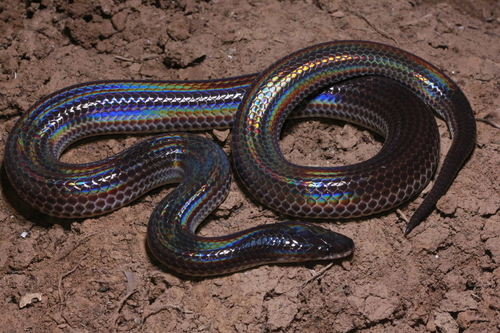
Sunbeam Snake
The Xenopeltis unicolor, or sunbeam snake, dazzles with iridescent scales that shimmer like a rainbow. A nocturnal burrower, it thrives in Southeast Asia's humid forests. This non-venomous snake flattens its body to intimidate predators, playing a vital role in controlling small vertebrate populations.
Low
Aggression
Least Concern
Conservation Status
Stable
Population Trend
Characteristics
The Xenopeltis unicolor, commonly known as the sunbeam snake, is a non-venomous snake found in Southeast Asia. It is renowned for its iridescent scales that shimmer with a rainbow-like sheen under light. This burrowing species prefers humid forest and grassland habitats, often emerging at night to hunt for small vertebrates and amphibians. It exhibits unique behavior by flattening its body to appear larger when threatened.
Distribution Range of the Sunbeam Snake
Xenopeltis unicolor, commonly known as the sunbeam snake, is native to Southeast Asia. Its geographical distribution includes countries such as Thailand, Malaysia, Indonesia (Sumatra, Borneo, Java), Myanmar, Laos, Vietnam, Cambodia, and parts of southern China.
Sunbeam Snake's Habitat
Environmental Conditions
The sunbeam snake typically inhabits tropical and subtropical regions. It prefers environments with high humidity and warmth, such as rainforests, lowland forests, and agricultural areas. These areas generally have well-drained soils, which are crucial for its burrowing lifestyle.
Ecological Niche
Xenopeltis unicolor is a fossorial species, meaning it spends a lot of time underground. It is nocturnal and often found in areas with loose soil or leaf litter where it can easily burrow. The snake is non-venomous and primarily feeds on small mammals, amphibians, and occasionally other reptiles. Its iridescent scales are a unique adaptation that may help with camouflage in its natural habitat.
Copyright @ Nature Style Limited. All Rights Reserved.
 English
English